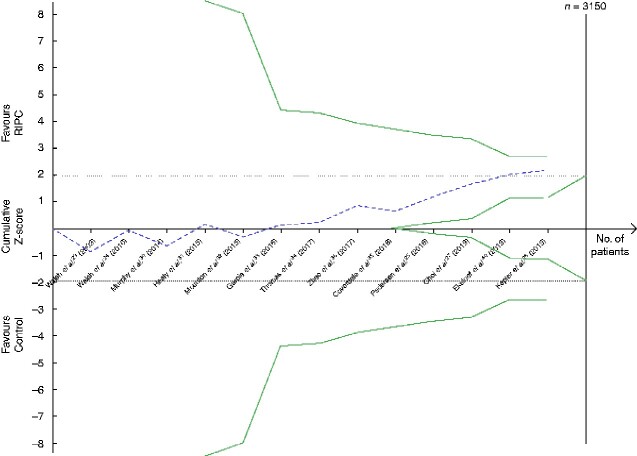Fig. 3.
Trial sequential analysis of the effect of remote ischaemic preconditioning on cardiovascular events
Relative risk reduction of cardiovascular events is 20 per cent, acceptable risk of type I error is 5 per cent, and power is 20 per cent on a two-sided graph. The Z-curve did not reach the diversity-adjusted required information size for a 20 per cent relative risk reduction of a cardiovascular event, of 3150 patients. Neither did the Z-curve cross the monitoring efficacy boundary (upper curve) or the futility boundary (lower curve). RIPC, remote ischaemic preconditioning.
The black dotted lines are the conventional efficacy boundaries (nominal statistical significance). The uppermost green line and the lowermost green line are both the monitoring efficacy boundaries on a two-sided test. The two shorter green line (within the dotted lines representing the conventional efficacy boundaries) are the futility boundaries on a two-sided test.

